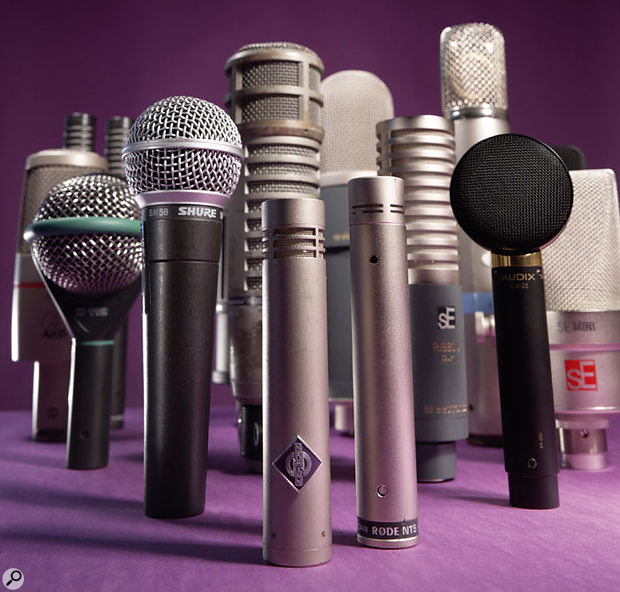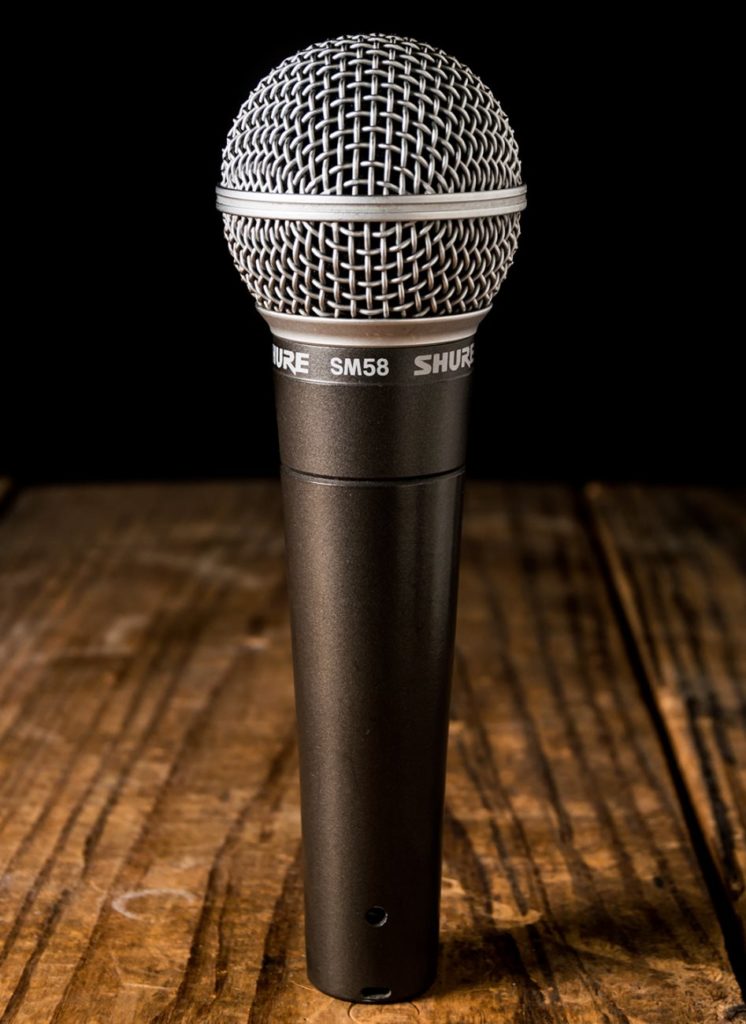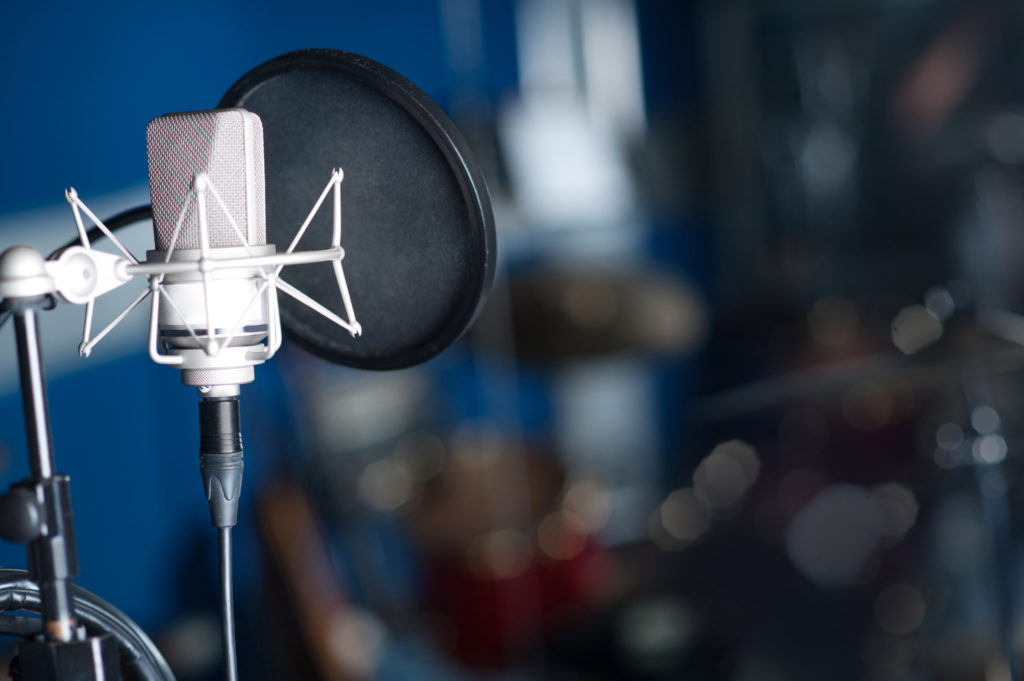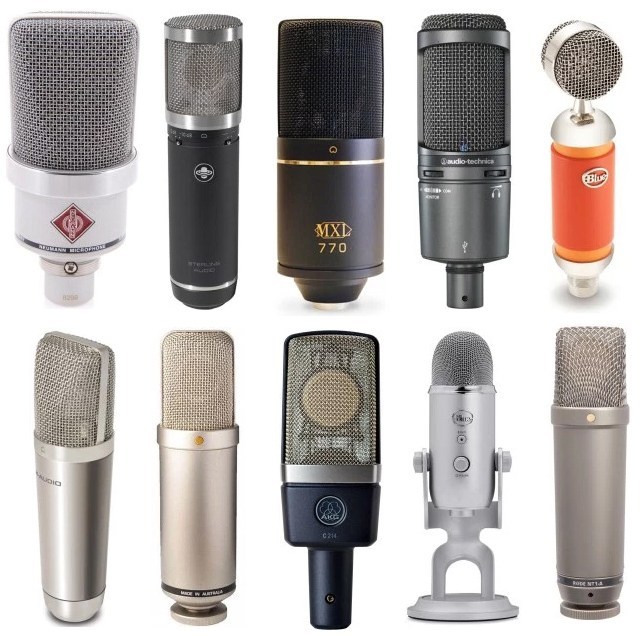How Many Mics

Have you ever asked yourself, "How many mics should I use when recording my guitar with vocals?" Well...the answer depends on what type of sound you want.
Before multi-tracking came along, using a single mic to record guitar and vocals was very common. Actually, before multi-tracking, sometimes 1 or 2 mics was all that was used to record your favorite bands of the past.
How many mics should you use?
It depends on what kind of sound you want
On some classic Beatles records, Motown records, etc. only a few mics were used for the whole band including drums and vocalists. Everyone got into a room, mics where put in front of the source, the engineer pressed record onto their 4 track tape machine and "Bob's your uncle".
Have things really changed that much since then?
Before we dive into the recording piece, lets go over a few types of microphones.
Dynamic Mics
Dynamic mics are considered your typical stage mic, like a Shure DM 58. Dynamic mics are used when the sound source is close and loud. Most of your front of house venues, concerts, churches, etc. use dynamic mics because they can handle high pressure sound levels. The most popular dynamic mics are Sure SM58, SM57 and SM7B.

Pros: Fairly inexpensive, rugged and road worthy, you don't have to deal with phase issues, (which we will get into later). The sound is pure and focused. They do not require phantom power (48v).
Con's: The sound of these mics can be nasally sounding and lack some high end in comparison to condenser mics. They also have a pronounced proximity effect which is the enhancement of bass sounds the closer your source is to the mic, so some EQ tweaking may be needed depending on the sound you are after.
Condenser Mics
Condenser microphones are the most common types of microphones you'll find in studios. They have much greater frequency response and transient response - which is the ability to reproduce the "speed" of an instrument or voice. They also generally have a louder output, but are much more sensitive to loud sounds.
Pro's: Much greater frequency and transient response. They have a louder output.
Con's: More expensive than dynamic mics, can be very brittle with little low end. They require phantom power (48v). Very sensitive to loud sounds and may require a pop filter for plosives "p" sounds.

Different Types of Condenser Mics

Large Diaphragm Microphones - Large diaphragm microphones (LDMs) are generally the choice for studio vocals, and any instrument recording where a more "deep" sound is desired. A large diaphragm microphone warms up the sound of what it's recording. You'll want a pop screen if using a condenser microphone for vocals; they're so sensitive to transient noises that the "P" and "SH" sound you make will cause distortion.
Small Diaphragm Microphones - Small diaphragm microphones (SDMs) are the best choice when you want a solid, wide frequency response and the best transient response, which as mentioned previously, is the ability for your microphone to reproduce fast sounds, such as stringed instruments.
Good suggestions for condenser microphones include:
- Audio Technica 2035
- Oktava MC012
- RODE NT1
- AKG C414B
Once you have decided on the type of mic you are going to use, let's talk about mic positioning.
Mic Positioning
Mic Positioning Using 1 Mic: Let's say you are recoding guitar with vocals. Try to position the mic far away enough to capture the voice and guitar, but not too far where you capture the room sound. This is going to take some testing of various mic positions for the sound you want. Use your ears for best judgment. Using a cardiod mic in this scenario may work well because cardioid mics reject sound from its rear. It's basically point and shoot and you are there. Omni mics have a figure 8 pattern which picks up sound from the front and rear of its capsule. Again, use your ears and mic positioning for your optimal recording.
Mic Positioning Using 2 Mics: If you are using a large-diaphragm condenser, you can achieve a useful improvement in the amount of separation by switching from cardioid pattern (where the null is behind the mic) to figure 8 (where the null is perpendicular to the plane of the mic, and much deeper than in cardioid). What does that mean? It means when using a figure 8 pattern or Omni mic, there is a null point that will cancel the other mic out of its pickup. You may still have some spill but you won't have a phasing nightmare as you would if you setup 8 mics on a drum kit will all the mics very close to each other. Try it...and you will see what I mean. The sound will become smeary and washed out. Its a very audible difference.
Typical Microphone Applications

DRUMS
For starters, you'll normally want to stick with cardioid dynamic mics on the drums, a cardioid small diaphragm condenser on the hi-hat and a matched pair of either large or small diaphragm condensers for the overheads. Note that condenser mics can be used on the snare and toms. If you are the adventurous type, use a condenser mic on the kick too.
Drum mic placement requires a lot of experimentation: ask the drummer to play: listen, move a mic a few inches, listen again. Better yet: stay in the control room and have your assistance (if you are fortunate) move the mics while you listen. With some experience, the process become more streamlined. You'll know which mics you like, and where you're going to place them. But that's just the starting point; even professional recording engineers will change mics and positioning on an inspired whim.
ELECTRIC GUITAR
No need to over-think this one. If you can spare just one mic, use a dynamic (the iconic Shure SM57, for example), positioned close on the speaker cabinet. If you have a large-diaphragm condenser, try placing it a few feet back (if the source is loud, engage the pad, if the mic has one). You can mix these mics together at the console, or record them to separate tracks, if tracks are not at a premium.
If you’re overdubbing the guitar (or you can place the guitar cab in another room during tracking), you don’t have to be concerned with (drum) leakage. Assuming the cab’s in a decent-sounding room, experiment by backing up your condenser mic to soak up more room sound. If the mic has multiple polar patterns, try switching it to omnidirectional. You can, of course, use more than two mics – just watch your phase relationships.


ACOUSTIC GUITAR
A small diaphragm cardioid condenser is preferable here. As a starting point, aim it down, looking at the 12th fret, from about 6-8 inches away. Large diaphragm condensers can also work nicely on acoustic guitars, as well as ribbon mics. Have fun experimenting with different mics and placements to find what works best for you.
VOCALS
When it comes time to overdub vocals, you’ll want a large diaphragm condenser mic. For a lead vocal, you should match the mic to the vocalist – who may also have a personal mic preference.
ACOUSTIC PIANO
Usually recorded in stereo. Use two large-diaphragm condenser mics, or a large diaphragm for the low strings, and a small diaphragm for the highs. Piano mic placement is highly variable, so a certain amount of experimentation is in order. There are also piano mic kits that take the guesswork out of mic choice and placement.

Test various mic positions for the sound you want.
Use your ears for best judgment.
So, as you can see, there are different techniques for different mics for different applications. Not 1 mic or application per mic is a standard setup. As I always tell recordists and engineers, use your ears to find out which mic suits your application.
Until the next time. Peace.
D. Mapp
